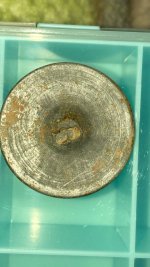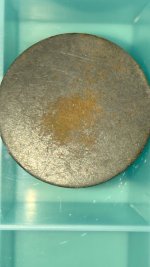LostinGeorgia
Sr. Member
- Aug 21, 2023
- 415
- 1,790
Found this at the same site where I found the 1873 Seated Liberty half recently. It is 27.4 mm in diameter. Has a spun back. Color doesn’t look right to be a Tombac but not sure as I have never found one.









